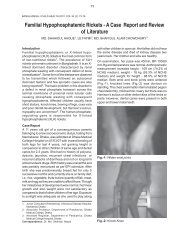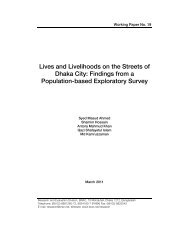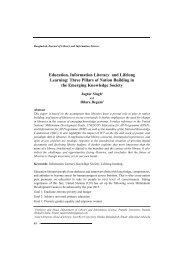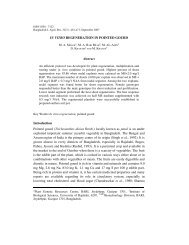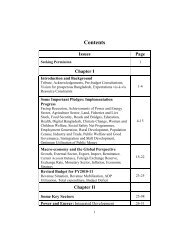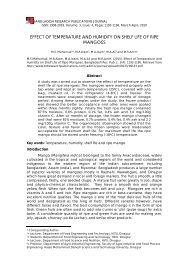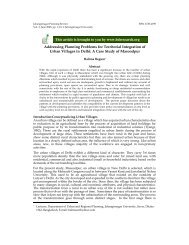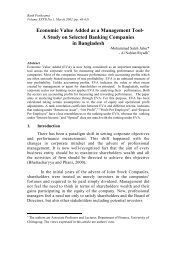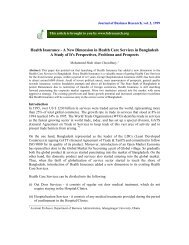Acceptability, Comprehensibility and Reported Influence - BRAC ...
Acceptability, Comprehensibility and Reported Influence - BRAC ...
Acceptability, Comprehensibility and Reported Influence - BRAC ...
Create successful ePaper yourself
Turn your PDF publications into a flip-book with our unique Google optimized e-Paper software.
During the antenatal visits SKs told women to glue the posters/stickers in a suitable<br />
place to enable other family members to easily see <strong>and</strong> read messages of the<br />
pictures. However, there were various reasons given for not displaying the stickers<br />
<strong>and</strong> posters openly. Some of the pregnant <strong>and</strong> lactating mothers felt that displaying<br />
the pictures of maternal danger signs inside their room, where they could be seen by<br />
the male relatives <strong>and</strong> parents-in-law, would be a shameful thing. Some, therefore,<br />
glued the posters or sticker of maternal danger signs either at the corner of the room<br />
or on the back of the door where they were not immediately obvious. A pregnant<br />
woman mentioned,<br />
“What will he think, if a man (purush manush) comes <strong>and</strong> sees these<br />
pictures I feel shy. That is why I glued this picture to the back of the door.”<br />
Women also kept the sticker <strong>and</strong> poster of maternal danger signs inside the drawer<br />
of the table because their husb<strong>and</strong>s had objection towards the posters. Women also<br />
perceived these poster <strong>and</strong> stickers were only for the pregnant women.<br />
“I have three children. I do not need to take more babies. That is why I do<br />
not need to hang the sticker up. So, I kept it in my drawer.”<br />
According to SKs, elderly people did not like open display of the stickers inside the<br />
room. Elderly <strong>and</strong> some of the more pious community members believe that prayer<br />
(namaj) is impossible if the posters illustrating human beings would have been hung<br />
inside the room. In some cases, children of the household also removed the posters<br />
from the door.<br />
Easy access to help given by the display of health workers’ cell number on<br />
posters <strong>and</strong> stickers<br />
Most of the respondents perceived that poster or stickers containing cell phone<br />
number of <strong>BRAC</strong> CHW gave community people assurance about the accessibility of<br />
help. They believed that in any complication, if they made a phone call (phone<br />
number mentioned in poster), <strong>BRAC</strong> staff would be there to help. A lactating mother<br />
described the circumstances of her delivery as follows,<br />
“When I was in excessive bleeding (in local term ‘Tej’) during delivery, Monju<br />
Apa (SS) feed me a tablet (misoprostol). Then we called [telephoned] Shonali<br />
Apa (SK). She came very soon after calling her.”<br />
Some women reported to seek help from SK by using the cell phone numbers as<br />
shown in the case of Muslema (Box 4).<br />
16 RED Working Paper No. 21



